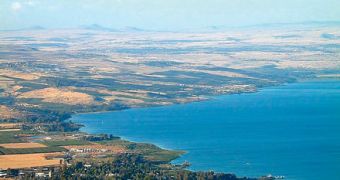A mysterious monument has recently been found at the bottom of the Sea of Galilee in Israel. Specialists say that the structure is at least 6,000 years old, and that it is shaped like a cone.
Experts were able to determine the age of the monument after analyzing how much sand built up around its base as the years went by.
They say that, according to their measurements, a portion measuring 6-10 feet (1.8-3.04 meters) in height of this monument now sits below the Sea of Galilee's bottom.
When coming across this monument, the researchers were merely analyzing alluvium pebbles in the area. What interested them was learning more about Yavniel Creek, a precursor to the Jordan River. Science News reports that, but for their using sonar technology to survey the lake's bottom, the researchers would have probably never come across this monument.
Thus, they only decided to dive and further investigate this part of the Sea of Galilee after the sonar alerted them that a rather peculiar structure was resting on the bottom.
At first, the researchers suspected that they were dealing with no more and no less than a pile of stones.
Still, they soon learned that they had in fact discovered a structure purposefully built to resemble a cone.
As far as they can tell, the monument measures some 39 feet (11.88 meters) in height, 230 feet in diameter (70.1 meters) and weighs somewhere around 60,000 tons.
The stones that make up this monument are all volcanic ones, and appear to have been carefully arranged to meet a very detailed construction plan.
The moment was most likely built on land and came to lie at the bottom of the Sea of Galilee some years after construction activities had come to an end.
Further investigations are expected to explain what purposes this monument served, and who its builders were.
A paper detailing the discovery of this monument is made available to the public in a recent issue of the International Journal of Nautical Archeology.

 14 DAY TRIAL //
14 DAY TRIAL //